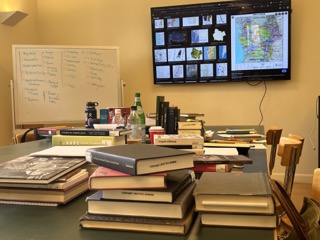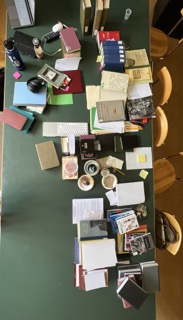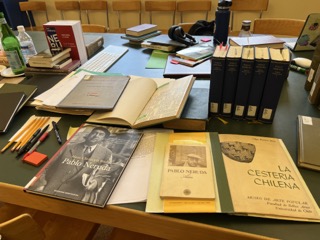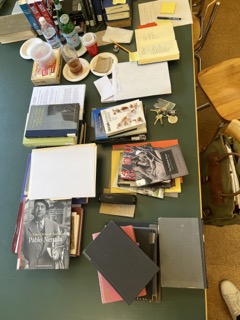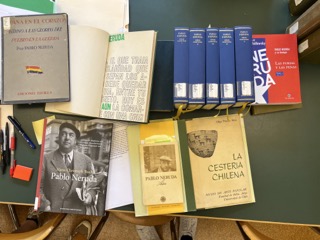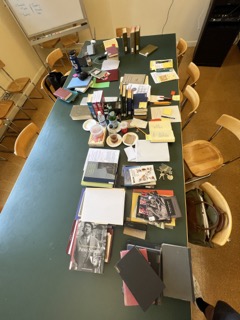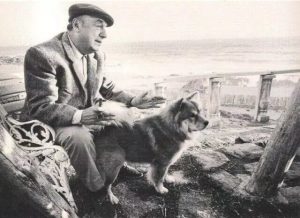Tellings of telling:
revelations, allusions, evocations in Pablo Neruda’s Aún
- Various Neruda works and a map of Araucanía region
- Aerial view of our workspace
- Complete Works of Neruda and other texts
As a Ford Scholar, Óscar Martínez ’25 worked with Professor Augusto Hacthoun of the Hispanic Studies Department for 8 weeks. Together we researched a late work by Pablo Neruda (1904 – 1973).
A Chilean poet, diplomat and politician, Neruda is best known for earlier works Veinte poemas de amor y una canción desesperada (1924) and Alturas de Macchu Picchu (1947), and perhaps also for his Nobel Prize in Literature in 1971. Our research was intended to construct a guide for readers who are less familiar with Neruda’s later work.
- Vassar’s edition of Aún and Obras Completas Volumes I – V
On July 5th and 6th of 1969, as a present to himself for his 65th birthday, Neruda wrote a cycle of 28 numbered poems, over 400 verses, titled Aún. It was published a week later in a limited edition of 500 copies. Vassar’s Thompson Library owns copy number 299, which we used as anchor for our research, together with editions of his complete literary prose and poetry, published letters and political writings. These were supplemented by digitized sources held in the Fundación Pablo Neruda, the Biblioteca Nacional Digital de Chile, the HATHI TRUST Digital Library.
We began with an in-depth reading, discussion, and analysis of the book, followed with the reckoning of autobiographical, geographical, historical, and conceptual references, plus words or phrases needing elucidation. We were aided by numerous printed and digital resources, including a concordance of Neruda’s poems, bibliographies, dictionaries, glossaries, scholarly publications, and photo and video archives.
We then dove deeper and analyzed the structure of every poem, the meter of every verse, their rhetorical devices, and their organic linkages within the book. Poem by poem, we searched for textual and conceptual connections between Aún and Neruda’s prior writings, and for echoes within Neruda’s contemporaneous texts.
Drawing on some of our findings and analyses, I have made a Story Map to give a general sense of our research journey.

